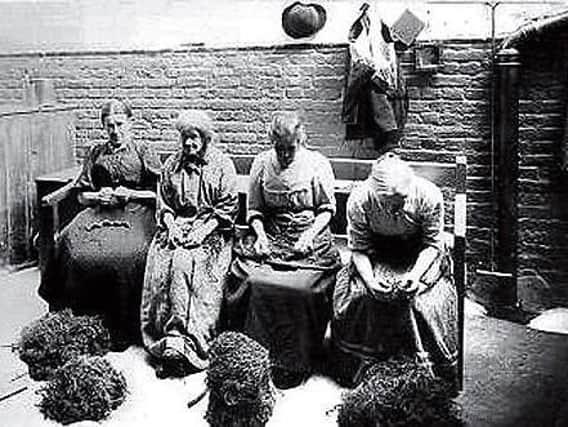COLUMN: Life in Sheffield's workhouses


And we are all generally better-off than earlier generations. You don’t have to go too far back in history to find black and white photos of British children – barefooted because of poverty, a sight I am pleased to say we don’t experience these days.
In the past people who were not financially independent were placed in workhouses.
Pre 1834
Advertisement
Hide AdAdvertisement
Hide AdIn England in mediaeval times, the Christian Church tended to care for the poor in society. The monasteries played a part in this – until Henry VIII dissolved them in the 16th century. A replacement arrangement had to be formalised and the poor were seen not just in need of help but as a potential threat to social order.
Early objectives were to look after the vulnerable – the elderly, sick and disabled, and to ensure those who could work did so – or be punished. This seemed to make no allowance for those who, though willing, could not find employment. Early workhouses combined accommodation for the poor with a house of correction.
Local authority accounts from the 17th century show that £200 was spent on building a workhouse in Sheffield on Paradise Street and West Bar; nearby is Workhouse Lane. There were other workhouses including Kelham Street, Rock Street in Pitsmoor and Attercliffe with Darnall
Post 1834
The Poor Law Amendment Act (1834) established a new system of workhouses. These provided food and shelter but conditions were intended to be harsh to deter all but the most desperate. Charlie Chaplin in his youth spent a few weeks in the Newington workhouse. Life in workhouses was portrayed by Charles Dickens in Oliver Twist. People used to live in dread of them.
Advertisement
Hide AdAdvertisement
Hide AdIn Sheffield, in addition to extending the Kelham Street workhouse and the existing building at Pitsmoor, a new building was constructed at Fir Vale as well as a farmstead at Hollow Meadows. (http://www.workhouses.org.uk/Sheffield)
Modern times
Fortunately workhouses no longer exist, but poverty does. Whilst the welfare state has addressed many issues relating to poverty it cannot protect people from running into debt and the consequences that entails - which may put the very roof over your head at risk. Happily there are ways of dealing with and managing debt by simply contacting one of a number of debt advice charities or a licensed insolvency practitioner.
This column is brought to you in association with Wilson Field.